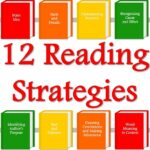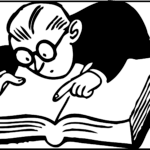4 Tips for Beating the SAT Critical Reading Section
The SAT exam is one of the best determiners of whether one is ready for the next level of education beyond high school. If you have the desire to attend a college or university then taking this test is vital to scholarship opportunities and to knowing which career path will best suit you. The test challenges you in three key areas: critical reading, writing and math. Following are 4 Tips for Beating the SAT Critical Reading Section of the exam.
 1. Make connections.
1. Make connections.
You may not be aware, but making textual connections when reading is something that you already know how to do. The next time you’re reading a novel and it reminds you of something read in a magazine or Internet, you’ve successfully made a text connection. There are three main types, and all are critical to enhancing reader comprehension.
Text-to-text connections demonstrate your ability to compare two texts and see the similarities or differences. How many of you thought of Romeo and Juliet the first time you read Twilight? Or did reading “The Most Dangerous Game” short story make you want to crack open The Hunger Games?
Likewise, you can make text-to-self connections, which take what you’re reading and apply it to your own life. Using Twilight as an example again, how many of you have drawn similarities to that and your own relationships? If not Twilight, then it’s likely you’ve encountered something else which has triggered a memory you can relate to.
Every connection that you make improves your comprehension skills, and that strengthens your educational opportunities. It also ensures that you will do better on this portion of the SAT exam.
2. Practice with context clues.
The next time you’re reading a favorite author (or taking a chance on one you’ve never heard of), don’t stop to look up a word that’s unfamiliar. Chances are you don’t do this anyway, but just in case–cut it out! Instead see if you can’t determine what the word means from the other words around it and from what is actually happening in the text itself. Determining the meaning of a word through this method – referred to as “context clues” – will do more for your reading comprehension skills than a dictionary ever could. It will also help you perform better on the sentence completion portion of the SAT.
3. Visit your Smartphone’s App Store
Owned a smartphone for a while? Then you probably know by now that no matter what the problem there is an app for it. A quick visit to the Apple App Store on my iPhone reveals 10 applications alone that can help improve your ability to improve in the area of sentence completion. SAT Sentence Completion from Allen Resources, Inc., runs $9.99 but there are other cheaper options pertaining to other exams that could help you just as much. Type in “SAT” and you’ll see more than 1,000 apps.
While we didn’t scroll through each one to make sure it was geared specifically to the SAT exam, we did scroll through the first 20 and each one helps with some or all portions of the exam. Some are free. Some are pay. Some are paid with free versions. Experiment with as many as you can until you’re comfortable, and we’re confident you’ll find one that suits your fancy.
4. Create your Own Test
It’s a bit old school but highly effective. For best results it is recommended that you try it out on a book that is foreign to you. Perhaps one you are reading now, one you’ve always wanted to read or one you have been assigned. Here’s what to do. Select three chapters or choose three different books and select a chapter from each. The SAT critical reading battery is divided into three portions – two 25-minute periods and one 20-minute – comprised of 67 questions. Break the reading into similar portions of time and use that to first read the text and then develop 22 questions that pertain directly to the assigned reading.
Your aim isn’t to recreate the SAT on your own. Instead it is to think under fire using a timed reading backdrop. See how long it takes you to develop 22 text-specific questions for each section. What you’ll find is that your mind is able to pick out more details than you originally expected that it could find. Of course, if you come up with the question you’ll know the answer automatically so answering each is not necessary. It’s a matter of being able to drill down into the text and strengthen your attention to detail, which is really what critical reading is all about.









